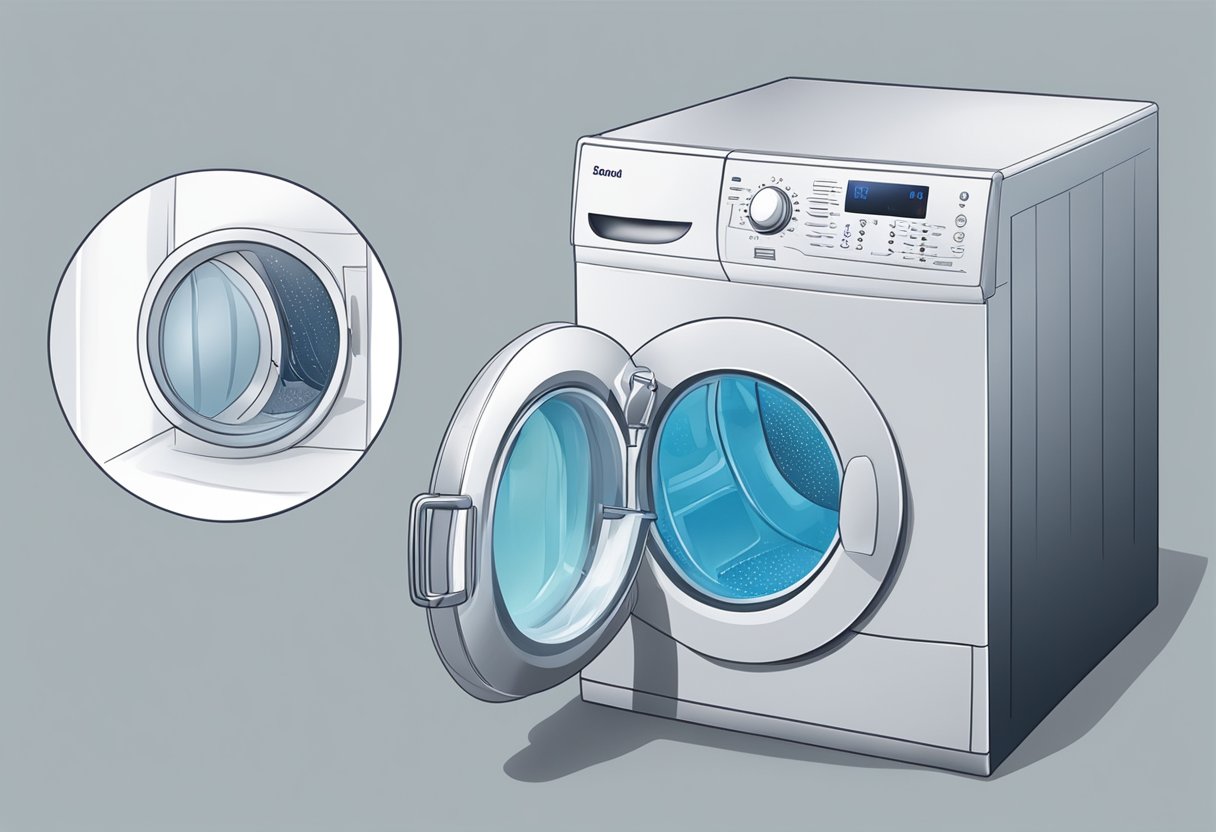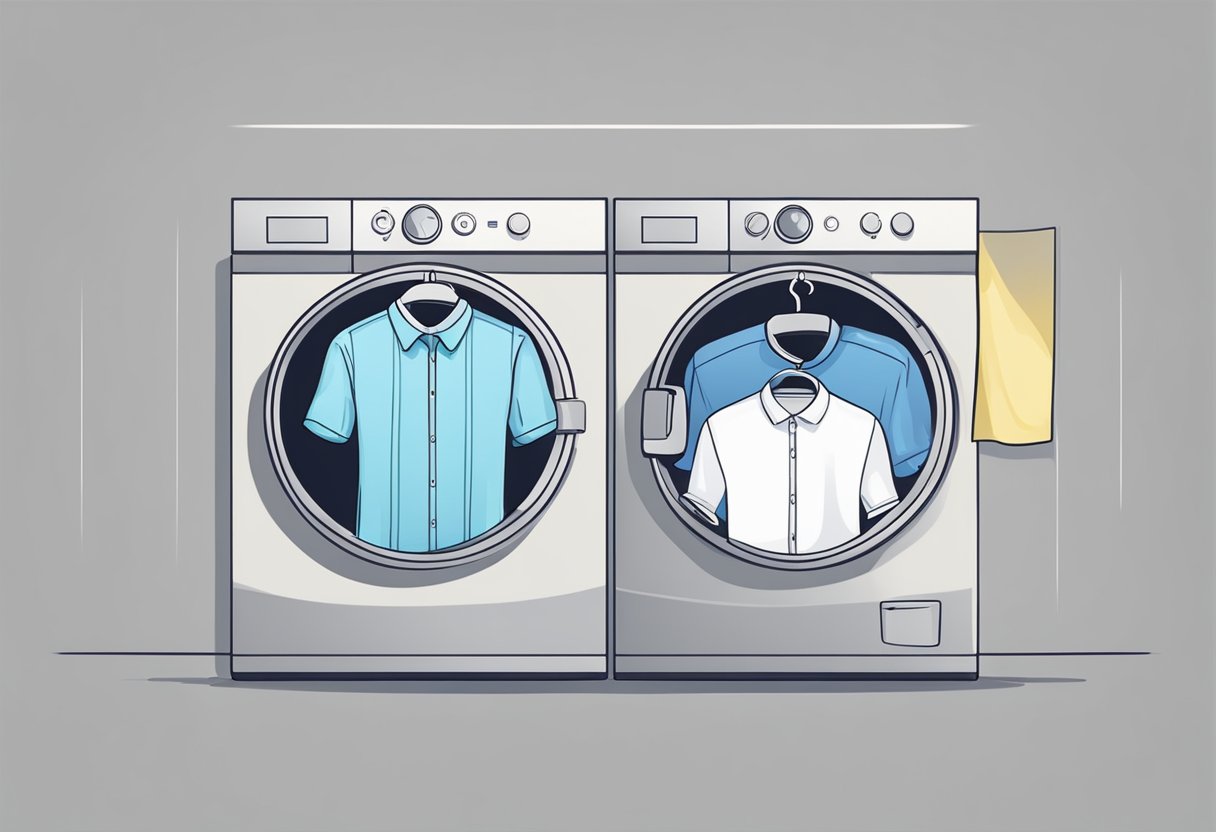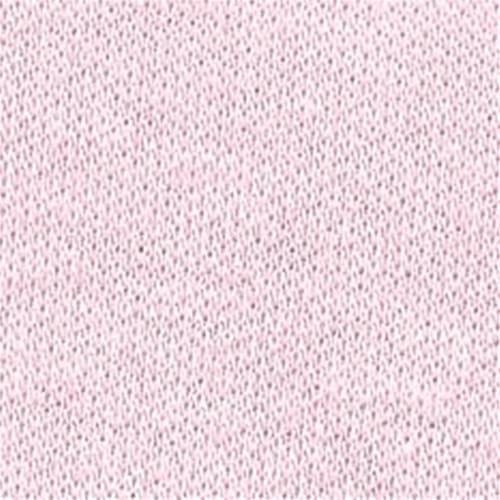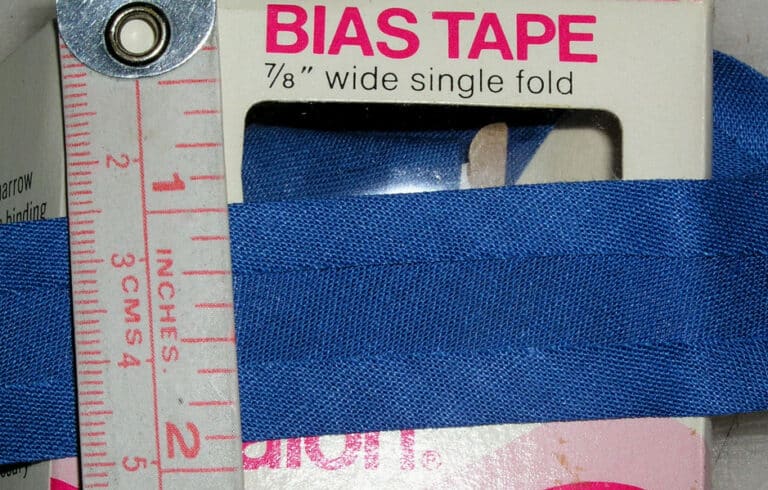How to Shrink a Shirt: The Easiest Method I’ve Tried That Actually Works
Wearing a shirt that doesn’t fit right is annoying, especially if it’s a loose t-shirt you got at an event or as a gift. Believe it or not, you can adjust the size of your shirt at home using just your washer and dryer.
Heat from hot water and the dryer helps make a shirt smaller, so you get a better, more comfortable fit. It’s not magic, but it works surprisingly well.

Different materials react to heat in their own ways. Cotton shrinks fast, but synthetic fabrics like polyester need much more heat—sometimes even boiling water—to shrink at all.
With a few simple tricks, you can get most shirts to fit better. Whether you want to shrink the whole thing, just the sleeves, or protect a printed design, it’s doable.
Table of Contents
- 1 How Do You Make Clothes Smaller If They Are Too Loose?
- 2 Will Hot Water Cause Your Clothes to Shrink?
- 3 How to Shrink a Shirt: 5 Easy Methods
- 4 Steps for Making a Shirt Slightly Smaller
- 5 Quick Ways to Shrink a Shirt
- 6 Steps for Safely Shrinking a Graphic Tee
- 7 How to Shrink 100% Cotton Shirt
- 8 How Do Various Fabrics Respond to Shrinking?
- 9 How to Shrink a Dri Fit Shirt
- 10 How to Shrink Shirt Sleeves
- 11 Best Way to Shrink a Shirt
- 12 Frequently Asked Questions
- 12.1 Can You Make a Cotton Shirt Smaller Without Ruining Its Quality?
- 12.2 What’s the Safe Way to Shrink a Poly-Cotton Blend Shirt?
- 12.3 How Can You Shrink a Shirt Quickly and Get Results?
- 12.4 How Do You Use a Dryer to Make a Shirt Tighter Without Hurting the Print?
- 12.5 Which Methods Will Gently Shrink a Shirt Overnight?
- 12.6 How Can You Reduce Shirt Size Without Using a Washing Machine?
Key Takeaways
- Shrinking a shirt is easy with basic home tools.
- Fabric type and care labels matter a lot.
- Hot water and heat usually work, but results depend on the material.
How Do You Make Clothes Smaller If They Are Too Loose?
When your favorite outfit feels way too baggy, you’ve got options. The classic way is to use heat and moisture to shrink your clothes, but the right method depends on the fabric.
Hot Water & Drying
Just toss your shirt in a wash with very hot water, then tumble dry on high heat. These steps make the material contract.
This works great for 100% cotton shirts and denim. Natural fibers usually shrink by a full size, sometimes more if you repeat the process. For more details, check out guides like shrinking shirts in hot water and a high-heat dryer.
Targeted Heat Methods
If you need more control, try a handheld steamer or an iron with steam. These help you shrink just certain parts—like sleeves or hems—without risking the whole shirt.
Jeans can really benefit from a hot soak followed by a blast in the dryer. It’s a good combo for stubborn fabrics.
Consider the Fabric
Always check the care label. The fabric type makes a huge difference:
- Cotton: Shrinks easily and evenly with heat and moisture.
- Polyester & Synthetics: Tougher to shrink, even after several washes.
- Blends: Can shrink unevenly, so keep an eye on them.
| Fabric Type | Shrinkage Level | Best Method |
|---|---|---|
| 100% Cotton | High | Hot wash & high dryer heat |
| Polyester | Low | Use highest heat |
| Cotton Blends | Medium | Hot wash, dry on high |
| Denim | Medium/High | Hot soak & dryer |
Beware of Special Treatments
Some brands preshrink their shirts, so don’t expect much change after washing and drying. Certain coatings, especially on polyester or stain-resistant shirts, can block shrinking almost entirely.
Expectations Matter
Honestly, shrinking clothes by two or three sizes almost never happens. You’re not going to turn a plus-size tee into a medium just with heat. For big changes, you’ll need to tailor or alter the garment.
Quick Tips to Remember
- Test your method on a small, hidden spot first.
- Be careful with high temps to avoid burning or ruining your shirt.
- Focus on natural fibers like cotton and denim for best results.
If you follow these steps, you’ll have a good shot at getting a snugger fit—whether you’re shrinking shirts, jeans, or just experimenting. For more step-by-step advice, see shrinking a shirt by soaking and drying.
Will Hot Water Cause Your Clothes to Shrink?
If you’ve ever pulled your favorite shirt from the wash and found it smaller, you’re definitely not alone. Hot water shrinks clothes—especially those made from natural fibers like cotton and wool.
Why do clothes shrink? It’s all about how fabric reacts to heat and moisture. Here’s a quick breakdown:
| Fabric | Chance of Shrinking | How Heat & Moisture Affect It |
|---|---|---|
| Cotton | High | Shrinks back to original fibers’ shape |
| Wool | High | Fibers lock together, fabric tightens |
| Polyester | Low | Needs very hot water for shrinkage |
| Linen, Silk | Medium to High | Can shrink with high heat and moisture |
Cotton shrinks because the fibers stretch during manufacturing. Hot water lets them snap back, making shirts and pants tighter.
Wool is a bit different. Its fibers have tiny scales, like human hair. Heat, moisture, and movement make those scales lock together, so wool can shrink a lot and even feel different.
Some clothes resist shrinking, usually because they’re made of synthetics like polyester. These materials are designed to hold their shape, even when you wash them warm. If you really want to shrink polyester, you’ll need boiling water or extra heat (here’s how).
Worried about shrinkage? Try these tips:
- Wash favorite or delicate items in cool or cold water.
- Avoid long, hot cycles.
- Air-dry instead of always using the dryer.
Understanding how heat and moisture work on different fabrics helps you keep your clothes looking good. If you want them to stay the same size, stick with cool and gentle settings.
How to Shrink a Shirt: 5 Easy Methods

There’s something great about a shirt that fits just right. If your favorite tee is too loose, you can adjust the fit at home with a few straightforward methods.
Let’s go through several techniques—each has its own vibe, time, and results—so you can pick what works for your fabric, your home, and your desired fit.
1. Using a Hot Wash Cycle in the Washing Machine
If you want a simple start, try your washing machine’s hottest cycle. Here’s what to do:
Step-by-Step Process
- Set the washer to the hottest water setting.
- Choose the longest, heaviest cycle (extra soak helps).
- Use regular detergent, skip fabric softener.
- Add only the shirt(s) you want to shrink.
- Check on your shirt if you’re worried about over-shrinking, but keep in mind you’ll lose some heat if you pause.
- When the wash ends, move the shirt straight to the dryer to keep the heat working.
Expert Tip: Hot water works best for cotton. Synthetics might not shrink much, so don’t expect miracles with polyester.
Table: Effects for Common Fabrics
| Fabric | Shrinkage Likelihood | Best Settings |
|---|---|---|
| 100% Cotton | High | Very hot, long wash |
| Cotton Blend | Medium | Very hot, long wash |
| Wool | Medium-High | Warm wash, gentle |
| Polyester | Low | As hot as possible |
2. Shrinking with Steam or an Iron, No Washing Required
Sometimes you don’t need a full wash. Maybe you just want to shrink a spot, or you’re short on time. Grab an iron or steamer for this.
Steps to Try
- Dampen the shirt all over or just in certain spots with a spray bottle.
- If it’s synthetic or a blend, lay a pressing cloth over the area.
- Set the iron to the right fabric—“cotton,” “synthetic,” or “wool.”
- Press gently, moving the iron steadily (don’t scorch one spot).
- Keep ironing until the fabric is dry and you see the change.
This is great for sleeves, necklines, or hems. You can also use it after a machine wash for extra shrinkage.
Quick List: Pros and Cons
Pros:
- Good for spot-shrinking
- Fast
- Perfect for last-minute fixes
Cons:
- May not shrink the whole shirt evenly
- Can scorch if you’re not careful
3. Using the Tumble Dryer to Reduce Shirt Size
The trusty dryer is a solid tool for shrinking. Warm air and tumbling motion help fibers contract, usually pretty evenly.
How to Use the Tumble Dryer for Shrinking:
- For cotton shirts, you can skip the wash—just toss the dry shirt in and use the hottest cycle.
- For blends, do a hot wash first, then move straight to the dryer on high.
- For wool, dampen lightly and use only low heat for a short cycle.
- Take the shirt out as soon as it’s dry. Over-drying can make shirts stiff or faded.
Natural fibers respond best, but most fabrics will shrink a little in the dryer. More about using the dryer to shrink a shirt.
Dryer Settings to Use
| Fiber Type | Dryer Heat Level | Cycle Length |
|---|---|---|
| Cotton | High | Full cycle, no cool down |
| Poly/Cotton | High | Full cycle, cool down |
| Wool | Low | Short, gentle cycle |
| Polyester | Highest setting | Extended cycle |
Tip: The dryer method is quick, but always check the label to avoid surprises.
4. Sunlight Drying for a Slight Fit Change
If you like a gentler approach, drying your damp shirt in direct sunlight works for mild shrinkage. This is best if your shirt’s just a bit too big.
How to Do It:
- Wet your shirt thoroughly with a spray bottle or short hot wash.
- Turn it inside out to protect against fading.
- Lay flat on a rack in direct sun.
- Smooth it out so there are no creases.
- Let it dry completely—could take a few hours, weather depending.
Benefits of Sun Drying:
- No electricity needed after washing
- More control over how much it shrinks
- Gentler for delicate shirts
Downsides:
- Results are subtle—don’t expect a huge change
- Can be inconsistent
Martha’s Tip: Get a sturdy rack and always dry shirts flat in the sun. Hanging can stretch them out again.
5. Shrinking a Shirt with Boiling Water
If you need a shirt to shrink a lot, boiling water is your best bet. This is the most aggressive method, especially for stubborn fabrics.
Steps:
- Boil a big pot of water—enough to cover your shirt.
- Take the pot off the stove or pour the water into a basin.
- Submerge the shirt with tongs or a spoon (don’t burn yourself).
- Let it soak until the water cools—one to two hours.
- Gently press out water (don’t wring).
- Finish with your favorite drying method; for extra shrinkage, use a hot dryer or iron.
Important Notes:
- This can shrink cotton shirts by several sizes.
- Synthetics shrink less, but boiling water can help a bit.
- Results can be unpredictable—sometimes you get more shrinkage, sometimes less.
Boiling Water Safety Tips:
- Always use mitts or tongs for safety.
- Keep the area well ventilated.
- Don’t let kids or pets near boiling water.
Table: Fabric Reaction to Boiling Water
| Material | Expected Shrinkage | Notes |
|---|---|---|
| 100% Cotton | High (1-3 sizes) | Follow with tumble dryer |
| Cotton Blend | Moderate | Durable, easy to handle |
| Polyester | Low | Needs very hot water |
| Wool | Variable | Can felt if overheated |
Helpful Tips for Any Method
- Check the care label before starting.
- If you only want a slight change, go slow.
- Shrinking is permanent—check as you go.
- Heat and moisture together work best.
- Once shrunk, you probably can’t stretch it back out.
Summary Table: Shrinking Methods At a Glance
| Method | Time Needed | Shrink Level | Good For |
|---|---|---|---|
| Washing Machine | ~1 hour | Moderate | Most fabrics |
| Iron/Steam | <1 hour | Small/Spot | Precise adjustments |
| Tumble Dryer | 30-60 min | Moderate | Most natural fibers |
| Sunlight Dry | 2-4 hours | Minimal | Gentle, for small change |
| Boiling Water | 1-2 hours | High | Dramatic results, cotton |
If you’re looking to make a shirt smaller, you’ve got options for every fabric and style. Each technique has its perks, and you can mix and match. For a deep dive, check out tips for shrinking your shirt and the boiling water method.
Steps for Making a Shirt Slightly Smaller

If you just want your shirt to fit a bit better, here’s a measured approach. Start by measuring your shirt—chest, sleeves, and length. Write those down so you can compare as you go.
Use gentle methods first. Wash in warm water, then air dry in the sun. This causes a little shrinkage without warping the shape.
If you use a dryer, set it to medium heat. Pause and check every ten minutes with your measuring tape. This helps you avoid over-shrinking.
Tips for Best Results:
- Stick to warm water, not boiling.
- Skip aggressive heat from irons or high dryer settings.
- Slow, steady shrinking gives you more control.
Boiling water and high heat can shrink shirts fast, but the process can be unpredictable. Go slow for safer results. For more on fabric care and shrinking tips, check this guide to shrinking clothes.
Quick Ways to Shrink a Shirt
Need to shrink your shirt fast? You’ve got two main choices: boiling water or hot ironing. Boiling water works quickly—just soak your shirt in a pot of boiling water for up to 20 minutes, then air dry. The longer the soak, the more shrinkage you get.
Ironing is good for shrinking certain spots, but you have to be careful not to make one side smaller than the other. Boiling is best for even results and works on most fabrics—see more at shrinking shirts fast.
Steps for Safely Shrinking a Graphic Tee
Shrinking a shirt with a print takes a gentle touch if you want the fabric tighter but the design intact. First, always turn your tee inside out before washing or drying to protect the print.
For cotton shirts, wash in cold water to avoid stressing the design, then dry on high heat. This usually shrinks the fabric without ruining the print.
If the shirt is polyester or blended, you may need higher heat, like a boiling water soak. But be careful—this can sometimes change how the design looks or feels, even if you’re careful.
Quick Tips Table
| Material | Best Method | Graphic Safety |
|---|---|---|
| Cotton | Cold wash, hot dryer | High |
| Polyester | Boiling water, hot dryer | Moderate to Low |
It’s not always possible to shrink a printed shirt without any risk, but these steps give you the best shot at keeping your tee looking good and fitting right. For more, check out shrinking a graphic shirt.
How to Shrink 100% Cotton Shirt
Shrinking a 100% cotton shirt is pretty straightforward with the right steps. Cotton absorbs water easily, and its fibers relax with heat and moisture. If your shirt is prewashed, it’ll shrink less, but you might still see a small change.
Here’s a quick guide:
- Machine Wash: Use hot water.
- Dryer: Dry on the highest heat.
- Boiling Method: Carefully soak your shirt in boiling water for 5–20 minutes, then air-dry. More here: cotton shirt boiling technique.
- Ironing: Use a hot iron on a damp shirt for extra shrinkage.
Cotton shrinks a lot, so keep an eye out to avoid going too far.
How Do Various Fabrics Respond to Shrinking?
Not all fabrics shrink the same way. Each type—natural or synthetic—reacts differently to water, heat, or the dryer. If you want the best results (and no surprises), it helps to know how each material responds so you can tweak your approach.
Working with Linen
Linen shrinks easily. Its loose fibers soak up moisture and contract with heat. If you want to shrink linen, soak in warm water and dry on low heat. Avoid high heat—it’s too harsh for linen.
Linen wrinkles a lot when shrinking. After drying, gently iron on low to smooth it out. Don’t use a steamer—it can stretch the fabric and undo your work.
| Step | What to Do | What to Avoid |
|---|---|---|
| Washing | Warm water soak | Boiling water |
| Drying | Low heat | High heat |
| Post-shrinking | Iron on low | High heat steam |
Handling Wool Fabrics
Wool is unpredictable. It can shrink a lot—sometimes more than you want. When sweaters end up doll-sized, it’s usually wool’s fault.
Shrink wool gently and check often. Use the lowest heat if you use a dryer or iron. For more control, let it air-dry after a quick warm wash.
Quick Tips:
- Check wool often during shrinking
- Lower temps help avoid extreme shrinkage
- Don’t leave wool in the dryer too long
Shrinking Polyester the Smart Way
Polyester is made of plastic fibers, so it’s tricky to shrink. Heat is the only way, but too much can melt or twist the fabric. If your polyester piece is huge, you might risk it, but otherwise, go slow.
Wash and dry on medium settings a few times for small changes. This keeps the fabric safer. For more, see how different fabrics react to heat.
Polyester Dos and Don’ts:
- Do: Try repeated warm washes and medium dry cycles
- Don’t: Use boiling water or high heat
Nylon and Its Shrink-Resistance
Nylon doesn’t shrink much. Most 100% nylon clothes won’t budge with heat or washing. If you’re hoping for a big change, you’ll probably be disappointed.
Nylon blends (with cotton or other fibers) might shrink a little in the dryer. Always check the care label. For pure nylon, tailoring is your best bet for a better fit.
Tips for Nylon:
- Look for blends with cotton or natural fibers
- Pure nylon holds shape very well
- Consider tailoring for big changes
Here’s a quick look at fabric behavior for shrinking:
| Fabric Type | Shrinkage Level | Preferred Method | Cautions |
|---|---|---|---|
| Linen | High | Warm water, low heat | Avoid high heat, steam |
| Wool | Very High | Gentle, incremental heat | Prevent over-shrinking |
| Polyester | Low-Moderate | Repeated warm cycles | Avoid high heat |
| Nylon | Very Low | Try blends in the dryer | Check fiber content |
How to Shrink a Dri Fit Shirt
Shrinking a Dri Fit shirt takes some care since it’s usually a polyester-cotton blend. If you want a smaller fit, try the boiling water method:
- Fill a big pot with water and boil it.
- Submerge your Dri Fit shirt for about 5 minutes.
- Let it cool before handling.
- Dry it on high heat in the dryer.
Heads up—shrinking can mess with the fabric’s moisture-wicking and may damage the material. If you can, just buy the right size. More tips: Dri Fit shirt shrinkage methods.
How to Shrink Shirt Sleeves
If your shirt sleeves are too long or loose, you can shrink them at home easily. Wash the shirt with hot water if the fabric allows. For delicate materials, just dampen the sleeves with a spray bottle.
Set your iron to the right fabric setting—“cotton” for cotton, “delicate” for synthetics. No iron? A hairdryer works too. Both use direct heat, which is what shrinks the sleeves.
Lay the shirt flat on a towel or board. Move your iron or hairdryer steadily along the sleeves, not lingering in one spot.
Keep going until the sleeves are dry to the touch.
Quick Steps:
| Step | Action |
|---|---|
| 1 | Wash or dampen sleeves |
| 2 | Select correct iron or dryer setting |
| 3 | Apply heat steadily to sleeves |
| 4 | Continue until sleeves are fully dry |
With a little patience, you’ll get sleeves that fit much better. I like this method—it gives my shirts a custom feel. For more ideas, this MasterClass article has useful tips.
Best Way to Shrink a Shirt
Shrinking a shirt at home is easy if you stick to the basics. Wash your shirt in the hottest water your machine allows. Then dry it on the highest heat for a full cycle. The fibers contract, and you usually end up with a shirt about one size smaller.
Here’s a quick guide for different fabrics:
| Fabric Type | Recommended Method |
|---|---|
| Cotton | Hot wash, high heat dry |
| Polyester | Boiling water soak or hot ironing |
| Wool/Silk/Linen | Warm water, gentle drying on low |
Always check the care label first. For delicate fabrics like wool, silk, or linen, avoid extreme heat—use warm water and a gentle dry. This keeps your clothes in better shape. For polyester, you’ll need boiling water or careful ironing, since regular washing doesn’t do much. For cotton, the heat method works every time.
Frequently Asked Questions
Can You Make a Cotton Shirt Smaller Without Ruining Its Quality?
Yes, you can shrink a cotton shirt and keep it looking good. Use warm (not boiling) water and dry on medium heat. Don’t over-dry—take it out while still a bit damp and let it finish air drying. This keeps the fibers soft.
What’s the Safe Way to Shrink a Poly-Cotton Blend Shirt?
For polyester-cotton blends, go easy with heat. Wash in warm water, dry on low or medium. Too much heat can damage polyester. Washing with similar items helps prevent stretching.
How Can You Shrink a Shirt Quickly and Get Results?
Short on time? Wash the shirt in hot water and go straight to a high-heat dryer. Check every 10–15 minutes. This works for most shirts, but watch out—too much heat can mess up some fabrics and prints. More details: step-by-step guide to shirt shrinking.
How Do You Use a Dryer to Make a Shirt Tighter Without Hurting the Print?
To protect prints, turn the shirt inside out. Use a moderate heat setting. Dry for shorter times and pull the shirt out while it’s a bit damp. Reshape by hand and let it finish air drying flat to keep the image safe.
Which Methods Will Gently Shrink a Shirt Overnight?
Lay the shirt in warm (not hot) water for about half an hour, then gently press out water. Roll it in a towel to get rid of excess moisture, and air dry flat overnight. This is a gentle way to shrink with less risk.
How Can You Reduce Shirt Size Without Using a Washing Machine?
If you want to skip the washer, spray the shirt with warm water. Lay it flat, and use a hair dryer on low to dry the spots you want to shrink. Or use a steam iron for targeted shrinking. Both are gentle and let you focus on problem areas.







